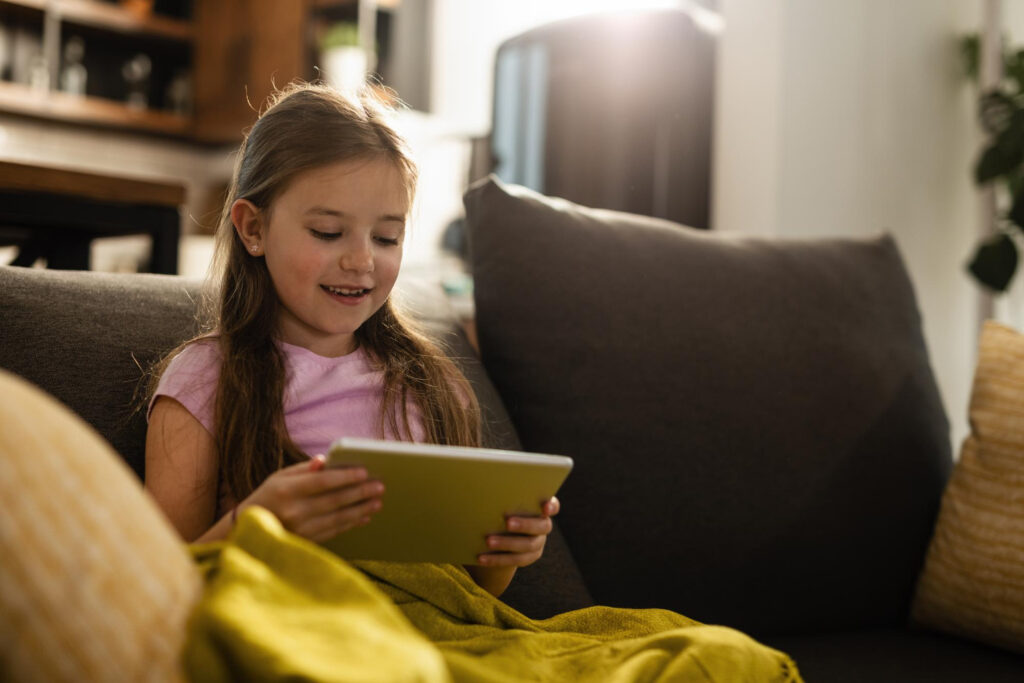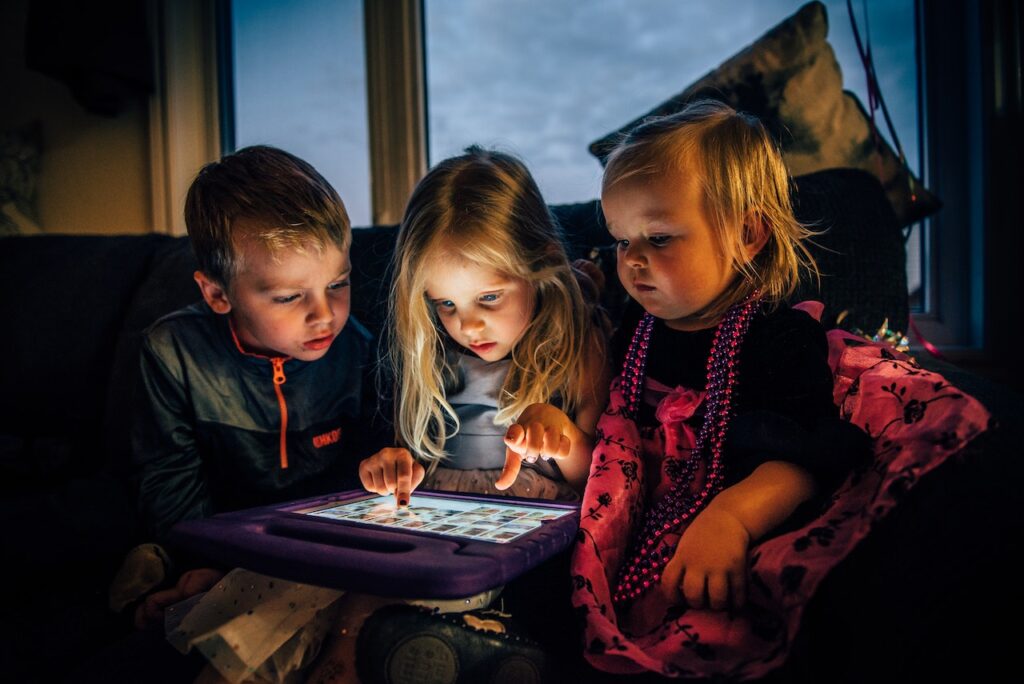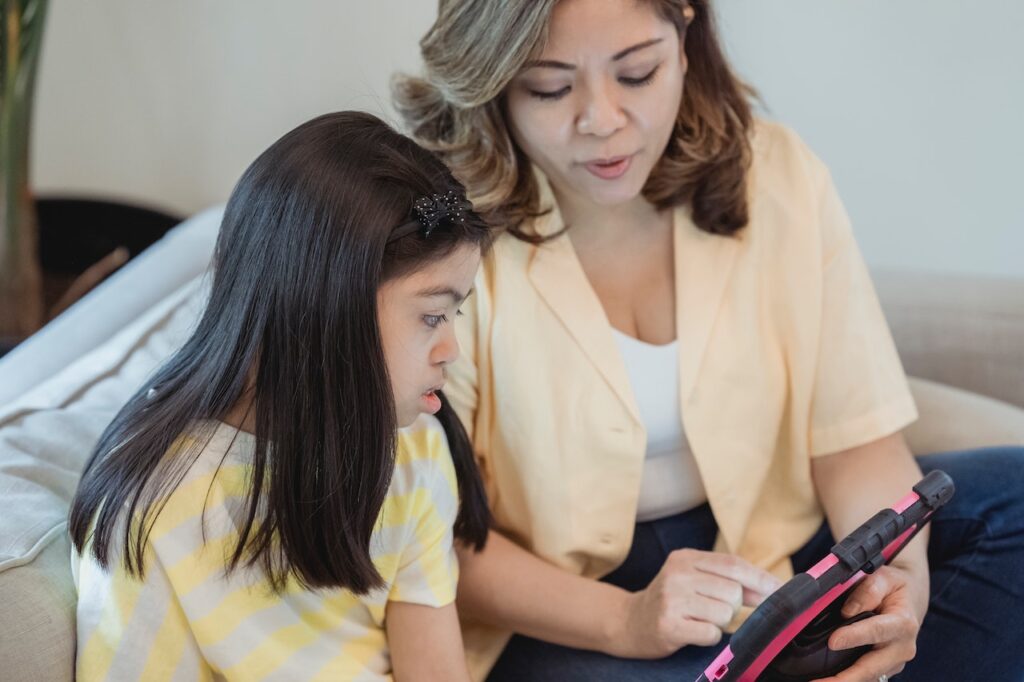
The typical six-year-old attends either kindergarten or first grade, depending on the birthday cut-offs for the district. In kindergarten, children learn to read and this includes classroom assignments related to phonic skills to help them master decoding, sounds, and patterns. First graders continue to sharpen their phonics mastery and begin to read more immersive books–some even read short chapter books.
Reading levels can vary per student, but each grade level sets a benchmark expectation for literacy mastery. To help guide students as they learn to read, parents might search for reading apps. What are the best free apps for 6-year-olds?
The Best Features of the Best Apps for 6 Year Olds
Before delving into the seemingly infinite app library in Google Play or the App Store, parents need to understand what they need from the app. Does their child need to review the sounds of letters? Do they need to learn letter identification? Perhaps their child is reading and needs help with reading comprehension or reading fluency.
Searching for reading apps could lead to thousands of results, and sorting through them all could be extremely tedious. What are the best features of the best apps for six-year-olds? The answer depends on each child, their interests, their level of engagement, and, most importantly, their individual needs.
Gamification: What Does It Mean?
Gamification is a tech-industry term that refers to educational apps or platforms/programs that are designed to function like a game. Gamification and the features of gamified apps differ. Some are extremely immersive and include game play that models popular interactive online games.
Players could solve puzzles or complete tasks or lessons that continue the action of the game as a reward. Lessons also could tie into the action of the game. Some reading apps include matching games, puzzles, or flash card functions.
The Downside of Gamification
Not all parents feel that gamification positively impacts learning. In fact, some parents don’t want their children to play gamified apps; instead, they choose apps or programs for children that are modeled from research-based designs and instructional methodologies.
Screen time also impacts the type of app parents choose for their child. If a parent sets strict limitations on screen time outside of the classroom, the interactive and enticing design of gamified apps could deter downloads.
Benefits of Gamification
The Smithsonian Science Education Center outlines five benefits of gamification; one of those benefits includes boosting cognitive development. However, Smithsonian notes that the benefit is tied to games that challenge the brain. Examples might include tangrams, puzzles, or other challenging games.

Almost Every App Has a Cost (It Might be Hidden)
Some parents do not want to spend money for educational apps; after all, there are so many free options! Both the App Store and Google Play offer a long list of free educational apps for different age groups. Certainly free apps are ideal?
There is nothing wrong with downloading free apps. Some educational free apps could help children work on basic skills related to phonics mastery. However, parents should not assume free apps are completely free.
The app might be free to download, but parents could notice that once the download is complete, the app requires a subscription to access content. Other apps might offer only a few features for free; upgrades and ‘extras’ are an additional cost.
Another hidden cost that could seriously impact the wallet is the option to make in-app purchases. What does this mean? In-app purchases allow the child or play to purchase items or additional features within the game or app. These purchases can include extra lives, extra moves, extra tokens, etc. When children purchase these optional features or items, parents are charged via a saved credit card or payment option.
Surprise charges are not uncommon thanks to in-app purchases. In fact, the news station KOLD-13 featured a story detailing the experiences and immense bills faced by parents whose children utilized the in-app buying privilege. One mother was charged nearly $900 from in-app purchases made within the game Roblox.
While the app is free to download, parents should take steps to ensure their children cannot make any in-app purchases when using the app. Apple Support offers a tutorial detailing how to disable in-app purchases for those using an Apple device, and the site How-To Geek offers the steps to disable these purchases on both Apple and Android devices.
How do parents know if an app offers in-app purchases? Thankfully, both the App Store and Google Play include details about whether or not the app offers this purchase method. If parents download an app that offers in-app purchases, they can use the steps to turn off the option to ensure they don’t see a large bill on their credit card.
How Does the App Measure Progress and Achievement?
Parents need to know that the apps they choose to help their child actually offer learning/educational benefits; the app must help the child improve in areas in which they struggle. While a gamified app might be fun for the child, how can the parent gauge results and progress?
Measurable results help parents understand their child’s learning games. Without proper analytics, parents might simply be downloading a bunch of apps with little benefit to their child.
To understand what each app provides and the capabilities it offers, parents need to read the description. In addition, if the app is free, parents can download the app and use it. When parents test an app, they can discover what it offers, how it works, and if it will truly benefit their child and move them forward.
If the app lacks analytics to measure progress, parents need to assess if the app is truly the best choice for their child.
Apps that Offer More than the Basics
Some six-year-olds struggle immensely with reading. Some children have fallen far behind their peers and are several reading levels below benchmark expectations for their grade level. Gamified apps or basic free apps might not offer the best design and structure for these students.
How do parents find more in-depth reading apps to guide their children and help them progress and hit expected benchmarks? The App Store and Google Play offer instructional apps designed to provide tutoring capabilities.
These apps are often free to download, but they require a monthly subscription to access the features of the program. Costs of instructional and lesson-guided apps vary; some enable parents to pay per month. Other apps and programs could include a different pricing and payment structure.
The question of whether or not the app is the best app for a child still needs to be asked. While an app offers incredible features and benefits, parents must look deeper into the structure, format, and capabilities. What does it teach children? How does the app guide the reading lessons? How does it measure progress?
Many programs provide the option to sign up for a free demo or trial. Parents can and should sign up for these free offers; again, using the app helps parents learn if it is the best fit for their child. Reach out to the company and ask questions, too. Many programs offer chat capabilities via their website.

What Free App is the Best?
The best educational apps for 6 year olds will not always be free. In addition, free apps often include in-app purchases, and this buying option could result in expensive charges for parents. When exploring the list of reading apps on Google Play or the App Store, parents should take time to research their options. Find out how the app guides instruction, see if it provides measurable data, and don’t forget to explore the app to understand if it truly delivers what it promises!

 Español
Español